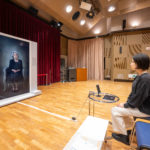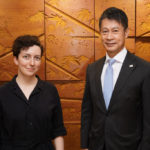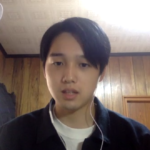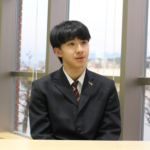Interview with Niwata Anju on the “Rebooting Memories” Project
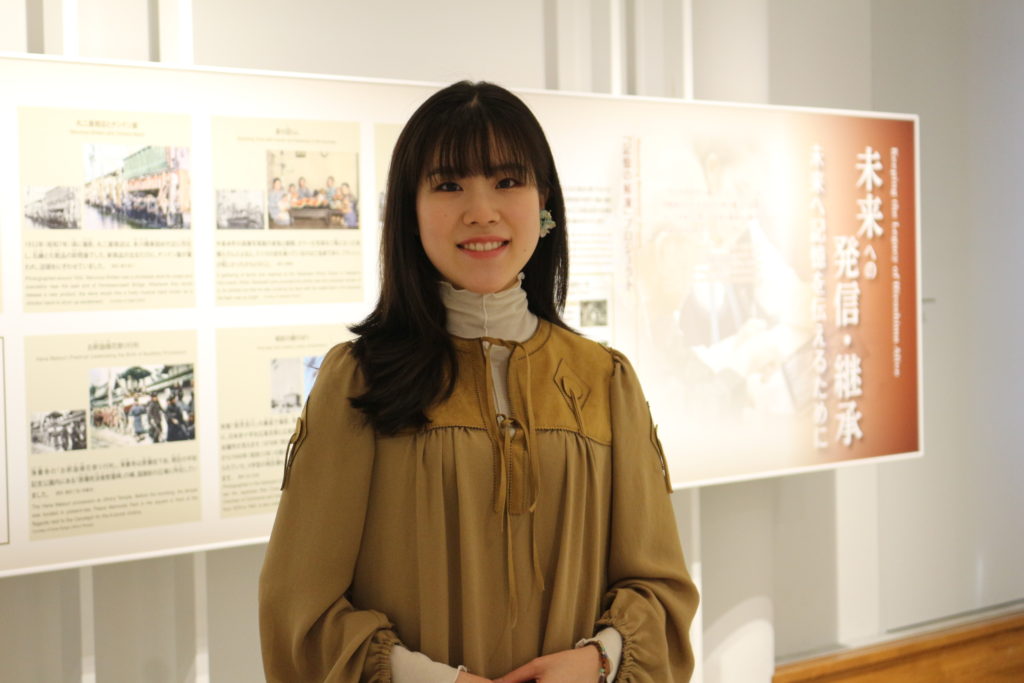
“Rebooting Memories” is a project to colorize monochrome photos in order to retrieve lost memories. The 2020 publication “Reviving photos from before and during the war with AI and colorization”(Kobunsha) was introduced in various media and had a big impact. We asked Niwata Anju about how this project came about and what motivated her to start it at 16 years old.
● What got you interested in the issue of peace?
I was born in Hiroshima and was educated on peace from a young age. But at first, the feeling of fear was dominant and I couldn’t accept it as relevant to me personally. When I visited the Peace Memorial Museum in kindergarten and saw the photos of the disaster and dioramas recreating the figures of the victims, it made me so sad that I couldn’t sleep at night. I couldn’t face it unless I separated it from myself.
But in my 5th year of elementary school, I came across this pamphlet. It had black and white photos and a map of what was once called the Nakajima District, now the Peace Park, as a shopping area with movie theaters and cafes. I saw that and thought, “Before the bombing people were living their lives just like now, and all that was lost in just one moment,” and then it finally felt personal.
Something my mother said was also influential. Before the Peace Assembly commemorating the day of the bombing on August 6th, I was feeling unwell and asked my mother, “Why is it that the other kids have no problem watching films about the war, but for me it’s so hard?” She gave me this advice: “It’s scary for adults too, so that’s just how it is. But the survivors are getting old now, and soon we won’t be able to hear their stories anymore. You can just close your eyes and listen.” Those words helped me shift from thinking I had to accept everything to just trying to listen.
● The start of “Rebooting Memories”
In high school I joined a peace committee that collected testimonies from atomic bomb survivors. I was at the Peace Park collecting signatures for the signing of the Treaty on the Prohibition of Nuclear Weapons when I suddenly met Hamai Tokuso. Mr. Hamai’s parents used to have a barber shop in the Nakajima District, but he lost his whole family in the bombing.
One week after meeting Mr. Hamai, I participated in a workshop with Professor Watanabe Hidenori (current professor of Information Studies at the University of Tokyo graduate school) who created the “Hiroshima Archive,” a collection of survivor testimonial videos and other materials mapped onto an online digital globe. I heard about the Professor’s “automatic colorization” project using AI. When I saw the examples, the colorization made the photos feel so real that it was as if the people in them might start talking to me. It made a strong impression on me.
When I was collecting testimonies, Mr. Hamai showed me a special album that had been preserved when he brought it to his evacuation site. I saw there were around 250 precious photos depicting everyday life before the war. When he told me he had gone to the movie theater over and over to “visit” the family that appears in the opening scene of the anime “In This Corner of the World,” I thought, “If I colorize Mr. Hamai’s photos and give them to him, he can always feel close to his family.” So I borrowed the photos, and after I colorized them and brought them to him a few days later, memories came back one after another. “Here we were enjoying the cherry blossoms,” and “I used to play with the pinecones from these cedar trees and pretend they were bullets.” He even said, “It’s like my family is still alive,” and was so happy. After that I manually corrected the colors according to Mr. Hamai’s testimony. Professor Watanabe saw a special about it on a local TV station and gave it the name “Rebooting Memories.”
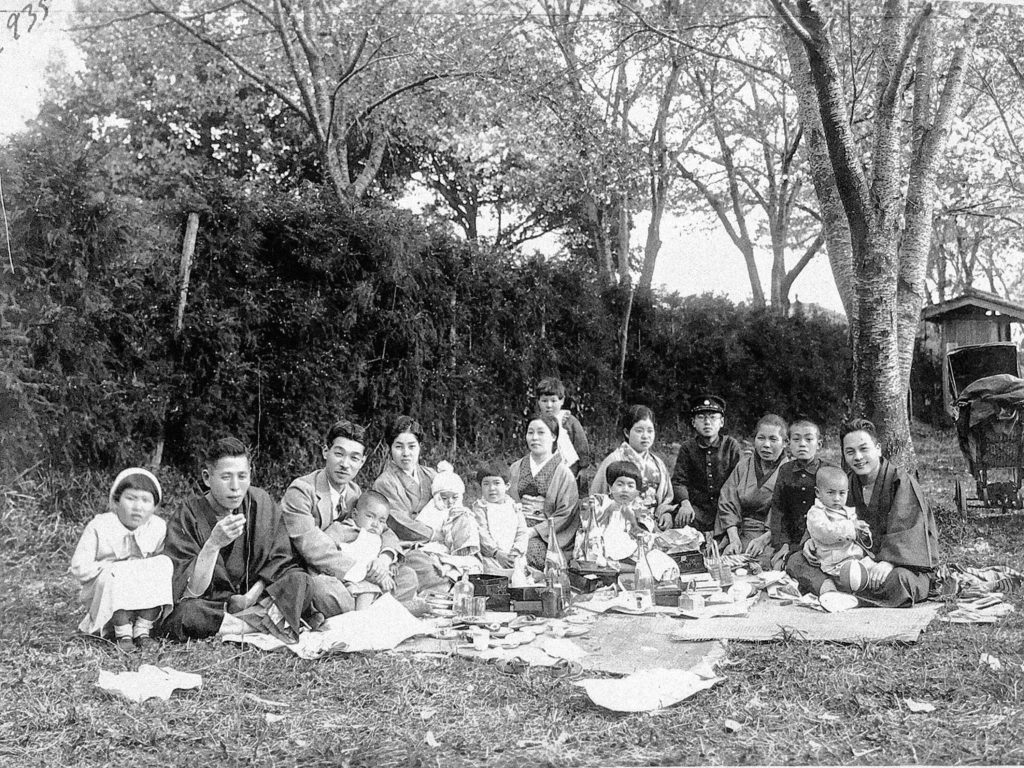
-1024x768.jpg)
This 1935 black and white photo (top) of Mr. Hamai enjoying the cherry blossoms with his family, relatives, and neighbors was colorized by hand (bottom) based on dialogue to get the color of the flowers, etc. just right. The boy wearing a white knit hat and being held by his mother, fourth from the left, is Mr. Hamai. (Photo: Hamai Tokuso. Colorization: Niwata Anju.)
● Lessons from the “Hiroshima Junior International Forum”
The summer of my first year of high school, when I met Mr. Hamai, I participated in the “Hiroshima Junior International Forum.” The thing I remember the most is the 3-minute English speech I gave before the Hiroshima Peace Declaration to present what I’d learned at the Forum. I also proposed using social media, film, animation, and smart phone apps to spread awareness about the Hiroshima Peace Declaration, and my proposal was adopted.
At the Forum, I got to talk about nuclear weapons and peace with foreign students my age for the first time. I spent 3 days with young people from nuclear powers like the United States and Russia visiting the Peace Memorial Museum and Peace Park and listening to survivor testimonies, and it made me realize that the message of wanting to create a world without nuclear weapons is best shared face to face. That’s where my current interest in other countries comes from.
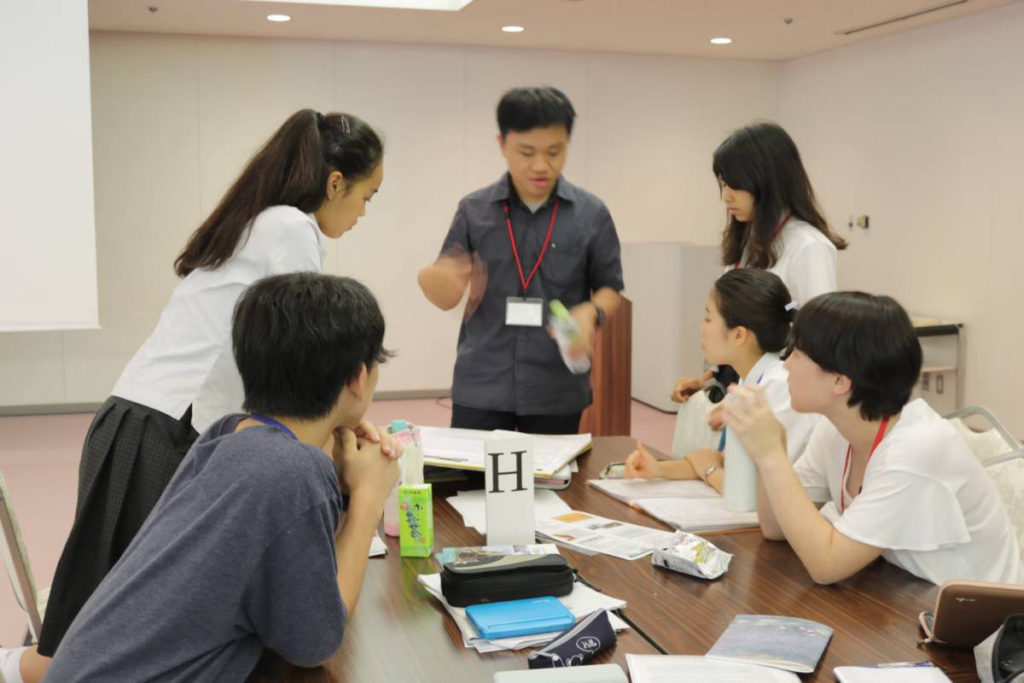
● Hopes for the future
The “Rebooting Memories” project appeals to people visually, but I want to share this message in a way that engages the other senses as well. Last year I worked with Hiroshima singer-songwriter HIPPY and pianist/composer Hara Kanako to create the song “Color of Memory” as a way to engage the sense of hearing. Filmmaker Tatsutomi Kohei created the music video. I wrote the lyrics based on Mr. Hamai’s story, and also challenged myself to write the chorus. I want to create opportunities for peace education beyond the actual bombing day of August 6th. I want people to experience the colorized photo albums and music in their everyday lives, and to use the “Rebooting Memories” AR app while walking around the Peace Park or elsewhere outside the classroom to think about war and peace. The other day, before The First Meeting of the International Group of Eminent Persons for a World without Nuclear Weapons, I had the opportunity to have a dialogue with 8 nuclear disarmament experts and 12 “Special Youth Envoys for Denuclearization.” I introduced “Rebooting Memories” and was very encouraged when people understood the importance of young people using art and technology to share the thoughts and memories of war survivors. I hope to continue expanding my range of influence and pass on this message even to people with no interest in war and peace.

“Rebooting Memories” exhibit on the 3rd floor of the Rest House
● Message to young people
It’s difficult for us to fully understand the tragedy and pain survivors went through when we haven’t personally experienced it, but we can still interact with survivors and share the thoughts and memories we receive from them in our own way. Sing if you’re good at singing, or make art if you’re good at art. I want everyone to use what they’re good at to spread the message of peace.
● Niwata Anju. Former student of Hiroshima Jogakuin Junior and Senior High School, and now a 3rd year student at The University of Tokyo. She uses art and technology to promote and research peace education, and to pass on the thoughts and memories of war survivors.
Tags associated with this article



